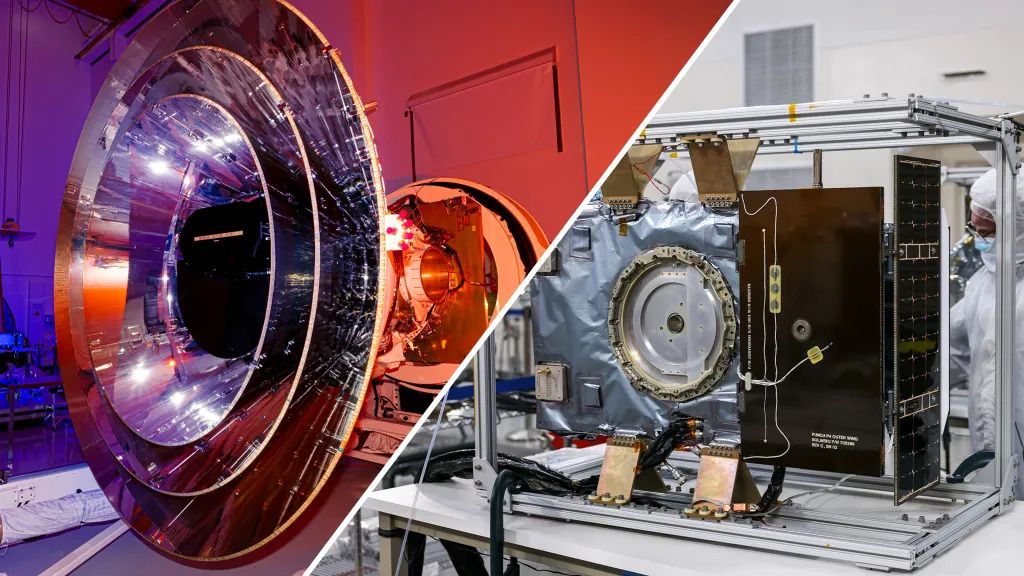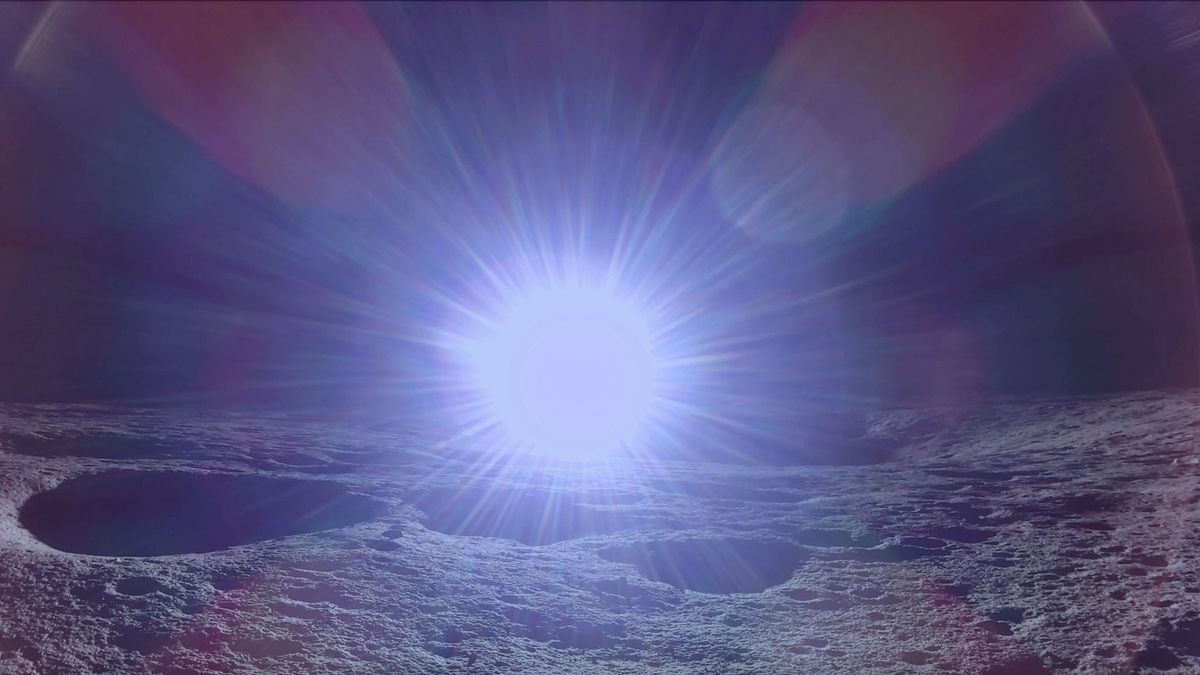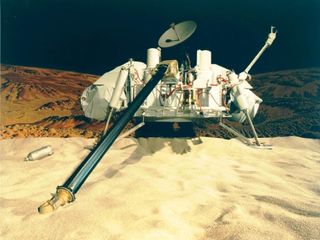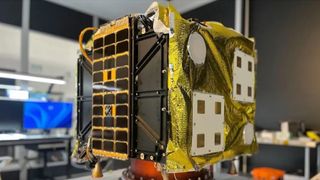The private Resilience moon lander now has a target touchdown date. The Tokyo-based company ispace, which built and operates Resilience, announced Monday (March 3) that it’s eyeing June 5 for the spacecraft’s lunar touchdown attempt. The current plan calls for Resilience to land that day at 3:24 p.m. EST (2024 GMT) near the center of Mare Frigoris (“Sea of Cold”), a basaltic plain in the moon‘s northern reaches. But that’s not set in stone. An image of Earth taken by the private Resilience lunar lander on Feb. 18, 2025. (Image…
Read MoreCategory: Solar System
Our solar system
NASA delays launch of SPHEREx and PUNCH missions to March 6
NASA’s SPHEREx and PUNCH missions will need to wait a little longer before heading to space. After delaying the launch of these missions three times — they were originally slated to take to the skies on Feb. 27 — the space agency has postponed liftoff once again for SPHEREx and PUNCH. Both payloads will still be launching aboard the SpaceX Falcon 9 rocket selected for the task, which had most recently targeted Tuesday (March 4) for launch. Now, the pair will remain Earth-bound until Thursday (March 6). They’ll liftoff from…
Read MoreSpaceX calls off Starship Flight 8 launch test due to rocket issues (video)
The next Starship megarocket to fly is stuck on Earth for a little while longer. SpaceX aimed to launch the eighth test flight of Starship — the biggest and most powerful rocket ever built — from its Starbase site in South Texas on Monday evening (March 3). That didn’t happen, however. The company encountered issues with both of the vehicle’s elements — its Super Heavy booster and Ship upper stage — and called the launch off after holding the countdown clock at T-40 seconds. SpaceX’s Flight 8 Starship rocket stands…
Read MoreSunrise on the moon! Private Blue Ghost lander captures amazing shot after historic lunar touchdown (photo)
Firefly Aerospace’s Blue Ghost lander has captured a gorgeous shot of sunrise on the moon as it begins its workday on the lunar surface. Blue Ghost aced its lunar landing attempt on Sunday (March 2), setting down close to Mons Latreille, a solitary lunar peak in the vast basin Mare Crisium (“Sea of Crises”) in the northeastern region of the moon’s near side. And the spacecraft is already getting to work, starting up its science payloads and capturing amazing images of its surroundings and the distant Earth from the lunar…
Read More‘America First’ on the moon? US must ‘dominate’ in space, acting NASA chief says during lunar landing
As a private lunar lander closed in on the moon early Sunday morning (March 2), poised to make history with the first fully successful landing, NASA’s acting chief Janet Petro was excited. And why not? NASA and its commercial partner Firefly Aerospace were just 24 minutes away from what became the successful landing of the Blue Ghost moon lander on the plain of Mare Crisium — a historic soft landing for a privately built spacecraft. The probe is carrying 10 instruments to study the moon for NASA as the agency’s…
Read MorePikoy Galaxy Projector review
We test all sorts of star projectors, and with so many coming to the market now (thanks to TikTok and Instagram campaigns), it’s hard to know what to choose. Specifications Size: 4.1 x 4.1 x 3.9 inches (105 x 105 x 100 millimeters) Weight: 0.95 pound (430 grams) Laser: Yes, Class 1 Control: On-body, remote control Rotation: Yes Sleep timer: Yes Speaker: Yes (built-in sounds only) Projection surface: Not specified (but large) Although we have compiled a guide of the best star projectors, new models crop up all the time.…
Read MoreIs it time to revisit what NASA’s Viking lander found on Mars in 1976?
Back in 1976, the dual NASA Viking landers came to full stop on the Red Planet. Their life detection experimental findings still reverberate within the scientific community – fueling the on-going discussion on a key question: Is there life on Mars? Fast forward to today, a new paper tackles and reconsiders the results of the Viking Biology experiments. Perchlorate finding The most significant change since those 1970’s experiments were conducted was the discovery of high levels of perchlorate on Mars. Perchlorate, plus abiotic oxidants, explains the Viking results and there…
Read MoreRussian cargo ship docks at space station with science, spacesuit and supplies
A new delivery of food, fuel and supplies has arrived at the International Space Station by way of a Russian supply ship. Roscomsos’ Progress MS-30 (or Progress 91, as referred to by NASA) cargo spacecraft autonomously docked to the aft port of the space station’s Zvezda service module on Saturday (March 1) as the two vehicles orbited 260 miles (418 kilometers) over the South Atlantic Ocean. The 6:02 p.m. EST (2302 GMT) link up came two days after the Progress launched from the Baikonur Cosmdrome in Kazakhstan. The uncrewed spacecraft…
Read More‘I think we all know that hope is fading.’ Private Odin asteroid probe is tumbling in space
The world’s first private spaceraft built to visit an asteroid is slowly tumbling in space and the outlook is dire. The spacecraft, called Odin, launched atop a SpaceX rocket on Wednesday (Feb. 26) on a mission to fly by the small asteroid 2022 OB5 for AstroForge, a company that aims to eventually mine the nearby space rock. But just hours after liftoff, Astroforge hit snags with the probe. The last contact was 20 hours after launch. “I think we all know the hope is fading as we continue the mission,”…
Read MoreGovee Star Light Projector review
We have reviewed countless star projectors and are always excited to see new arrivals in the market. There are literally hundreds of star projectors available, so we keep an eye out for models that have unique or different functionality than those we have reviewed. Specifications Size: 6 x 6.3 x 8.6 inches (15.2 x 16 x 21.8 centimeters) Weight: 2.8 pounds (1.3 kilograms) Laser: Yes, Class 2 Control: On-body, app, voice Rotation: Yes Sleep timer: Yes Speaker: Yes Projection surface: 650 square feet (60 square meters) The Govee Star Light…
Read More








